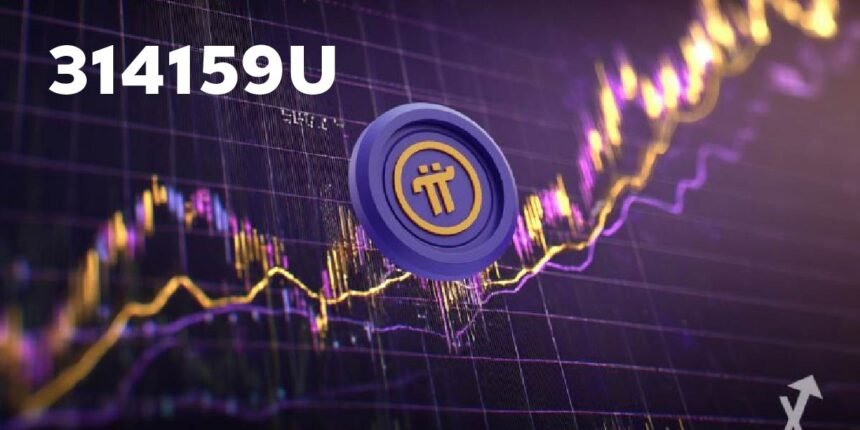What Is 314159u? The Rise of a Mathematical Enigma
314159u is a curious and evolving term that has rapidly captured attention in the worlds of mathematics, technology, and digital culture. At first glance, the number sequence “314159” clearly echoes the first six digits of Pi (π), the well-known irrational number representing the ratio of a circle’s circumference to its diameter. But the addition of the letter “u” adds a layer of mystery and interpretation that has sparked countless debates and explorations.
Is 314159u just another way of referring to Pi, or does it represent something fundamentally new—an upgraded, more efficient, or symbolic version? As the internet continues to explore this idea, 3141 59u has taken on meanings ranging from a math-based code to a speculative element to a symbol of computational evolution. The fascination lies not only in its mathematical roots but also in its potential to redefine how constants like Pi are used across science, engineering, and technology.
The Strange Origin of 314159u
Where Did 314159u Come From?
The origin story of 314159u is as interesting as the number itself. It first started appearing in obscure online forums like 4chan’s math boards, niche Reddit communities, and even early personal blogs in the late 1990s and early 2000s. Initially, it surfaced as a kind of puzzle or numerical curiosity, often shared among enthusiasts who had a deep interest in numerical patterns, symbolic mathematics, or mathematical jokes.
Many users speculated that it was simply a reference to the digits of Pi followed by a “u,” potentially standing for “unknown,” “universal,” or even “unit.” Others took a more cryptographic approach, believing 314159u might be a cipher or a riddle hiding a deeper code. In one particularly well-known thread, a user posted: “If Pi is infinite, then what happens if you lock it into a box with ‘u’ at the end?” While clearly poetic, this kind of phrasing only added to the intrigue and mythology of the number.
Theories and Speculations Around 314159u
Over time, several theories developed around what 314159u could really mean. Some believed it to be an intentional simplification of Pi—a mathematical approximation that sacrifices infinite digits for cleaner and more computationally manageable operations. Others viewed it as a meme that took a life of its own, much like “42” from The Hitchhiker’s Guide to the Galaxy, becoming symbolic of intellectual curiosity and unsolved mystery.
One of the most popular theories is that 314159u is a kind of “optimized Pi,” used in coding, simulation, or data models that do not require the endless precision of actual Pi. In the same way that some scientific constants are approximated depending on their use case, 314 159u could function as a flexible alternative that maintains mathematical harmony while streamlining computation. Comparisons have even been made with other enigmatic mathematical phenomena like Fermat’s Last Theorem, where mystery and history collided to create widespread intrigue. In essence, 314159u has become a blend of symbol, concept, and potential—far more than just a number.
Decoding the Mathematical Identity of 314159u
Is 314159u Related to Pi (π)?
It is impossible to understand 314159u without first discussing Pi (π). The digits 3, 1, 4, 1, 5, 9 are universally known as the beginning of the irrational number Pi, which continues indefinitely without repeating. This number plays a foundational role in geometry, trigonometry, physics, and many fields of science. However, 314 159u sets itself apart not by denying its connection to Pi, but by attempting to improve on its usability.
Some mathematical thinkers interpret the “u” as a unitary modifier, possibly standing for “unitized Pi,” a way to package Pi in a form that simplifies its application in coding and calculation. In this sense, 314159u is not just Pi; it is Pi transformed—still rooted in circular geometry, but adapted for a digital, computation-heavy world.
314159u vs. Traditional Pi
Pi, by nature, is irrational and transcendental. This means it cannot be expressed as a fraction and will never repeat or terminate when written as a decimal. These properties make it elegant but problematic in some high-performance applications, especially in digital systems where storage and speed are limited. This is where 31415 9u potentially offers a solution.
The hypothesis is that 314159u can be used as a simplified constant that behaves like Pi in common functions, but is adapted to work more efficiently in software, algorithms, and real-time simulation. Imagine a version of Pi that works just as well in practice, but with far less computational overhead. If this idea holds, then 3141 59u might be the start of a mathematical evolution, not a replacement of Pi but its digital counterpart—Pi 2.0, optimized for the computational age.
Real-World Applications of 314159u
In Engineering and Technology
Precision is everything in engineering. Whether designing bridges, calculating aerodynamics, or constructing high-rise buildings, even small computational errors can lead to disastrous results. 314159u, if adopted as an alternative to the traditional usage of Pi, could help engineers perform complex simulations and calculations faster without sacrificing accuracy. In areas like Computer-Aided Design (CAD) and circuit board modeling, where millions of micro-adjustments are made per second, 314159u could function as a standardized constant that accelerates design and reduces computational lag. It may also help reduce the file sizes of models and blueprints, improving rendering speed and system responsiveness.
In Healthcare and Diagnostics
In the world of modern medicine, 314159u might seem irrelevant at first—but that couldn’t be farther from the truth. Many imaging technologies, such as CT scans, MRIs, and ultrasound,s depend on geometric and spatial computations powered by mathematical constants. If 314159u provides a faster or more accurate method of calculation within these machines, it can directly influence the speed of diagnosis and the clarity of images. Early detection of conditions like tumors, internal injuries, or clots could be significantly improved by better image reconstruction powered by constants like 314159u. In the age of AI-assisted diagnostics, such mathematical tools are no longer theoretical—they are life-saving.
In Artificial Intelligence and Algorithms
Artificial Intelligence (AI) relies on large-scale computation, especially in fields like deep learning, robotics, and spatial modeling. Algorithms must be optimized not just for accuracy but for speed. When training a neural network or executing a complex prediction model, even minor improvements in computational efficiency add up. 3141 59u can potentially act as a smart constant that accelerates math-heavy processes, particularly in simulations that involve rotation, curvature, or motion—areas where Pi is frequently used. With AI rapidly expanding into real-time applications like autonomous vehicles and smart drones, constants like 314159u may soon become invisible but vital players in the next generation of intelligent systems.
Cultural, Historical, and Symbolic Value of 314159u
Historical Use of Pi-like Constants
From the Babylonians to the Egyptians, humans have been trying to quantify circles for thousands of years. The Babylonians estimated Pi as roughly 3.125, while the Egyptians used 3.16049. Greek mathematician Archimedes made one of the first accurate estimates of Pi using inscribed polygons. In India, Aryabhata and other mathematicians refined the number further. Through the centuries, Pi has symbolized humanity’s effort to bring structure to chaos. 314159u inherits this legacy while pushing it toward modern digital contexts. It reflects not just a number, but a cultural evolution—our shift from stone tablets to silicon chips.
314159u in Pop Culture
It’s no surprise that something as iconic as 314159u has spilled into pop culture. It’s been featured in puzzles, hacker lore, viral memes, and even tattoos. Like Pi, it represents a balance between logic and mystery. Pi Day (March 14th, or 3/14) is celebrated in schools and science centers worldwide. Some have begun to refer to March 14 at 1:59 PM as “3141 59u Minute,” combining the date and time for a fun tribute. In books, films, and games, this string of digits has become a shorthand for genius, curiosity, and uncrackable codes. It’s more than math—it’s symbolism.
Is 314159u a New Chemical Element?
The Scientific Theory
One fascinating and speculative interpretation of 314159u is that it represents a future synthetic element. Some fringe scientific discussions have connected 314 159u with the “island of stability”—a hypothesized group of superheavy elements that, despite their size, could be stable. These elements don’t exist in nature and must be created in laboratories. While 3141 59u is not currently recognized on the periodic table, some theorists believe the number could symbolically point to a yet-undiscovered material that holds revolutionary properties.
Could 314159u Be Synthesized?
Element 118, known as Oganesson, is currently the heaviest confirmed element. Beyond that, attempts to create new elements face the problem of rapid decay. If 314159u were real, synthesizing it would require unprecedented advances in atomic manipulation. The speculative nature of this idea doesn’t make it useless—on the contrary, it encourages scientific imagination and may inspire real experiments in particle physics and quantum chemistry. The keyword “314159u element meaning” is gaining traction online, showing that people are curious not just about its digital utility but also about its physical potential.
314159u in Modern Education and Research
Impact on Math Curriculum
Educators are starting to discuss whether new constants like 314159u should be introduced into school curricula, not as replacements for Pi, but as a tool to spark curiosity and critical thinking. Students may find it easier to understand mathematical concepts through simplified or symbolic numbers, especially in early computational training. By including discussions about 314159u, teachers can also explore how math evolves with technology.
University-Level Research on 314159u
Though still new, 314159u has begun to surface in academic papers, especially in computational math and algorithmic efficiency. Institutions that focus on digital optimization, numerical modeling, or theoretical math are experimenting with constants like this. The ongoing conversation is not whether 314 159u is “right” or “wrong,” but whether it is useful—and that’s what gives it academic legitimacy.
Controversies and Debates Around 314159u
Traditionalists vs. Innovators
Unsurprisingly, many traditional mathematicians push back against 31415 9u. They argue that Pi has stood the test of time for millennia and that modifying it undermines its elegance. On the other hand, digital-age mathematicians see 314159u as evolution, not erosion. It’s not about replacing Pi, but refining how we apply it in specific fields. The debate continues in journals, classrooms, and even YouTube videos where educators argue over practicality vs. purity.
Is It Just a Meme?
Many people ask: Is 314159u just an internet joke? A meme gone too far? Maybe. But even if it started that way, its evolution into a symbol of mathematical curiosity gives it new meaning. Like many memes, it has sparked real conversations, real research, and real questions—something no joke does unless it strikes a chord.
The Future of 314159u
Will It Be Adopted Widely?
It’s too early to say whether 314159u will become a standard, but signs are promising. Startups in tech, AI, and simulation are starting to integrate the constant in limited use cases. If results show improved performance or simplified calculations, mainstream adoption may follow. Libraries and software packages could begin including it as an optional constant.
What Needs to Happen Next?
To move forward, peer-reviewed research is essential. Universities, labs, and developers need to test 314159 u in real-world applications. If enough data supports its efficiency, it could be formally introduced into digital mathematics libraries and engineering frameworks.
Fun Facts About 314159u
314159u has been used as a password by software engineers who like math. Some believe it first appeared in CAPTCHA challenges as a nod to nerd culture. Others have made music tracks using the digits or included them in blockchain code. It’s a number with personality—something rare in the world of math.
Conclusion
314159u represents far more than a number. It’s a reflection of how math, technology, and curiosity blend together in the modern world. Whether a new constant, a meme, or a symbol of evolving knowledge, 314159 u continues to capture minds. As science and technology evolve, it may just be the code that opens new doors—and if nothing else, it reminds us that even numbers can carry stories.
FAQs About 314159u
What is 314159u exactly?
314159u is a mysterious numeric concept that is often associated with Pi and used to explore advanced computational ideas.
Is 314159u a real mathematical constant?
It is not officially recognized, but it represents a simplified or alternate approach to working with Pi-like precision.
Why is it called 314159u?
It derives from the first six digits of Pi and the “u” is believed to symbolize an unknown or universal value.
Is 314159u a new element?
Some speculative theories suggest it could be a symbolic label for a future synthetic element.
Where can I learn more about 314159u?
Keep up with math forums, emerging scientific journals, and online think pieces exploring future numerical constants.
For More Information Visit Fourmagazine







